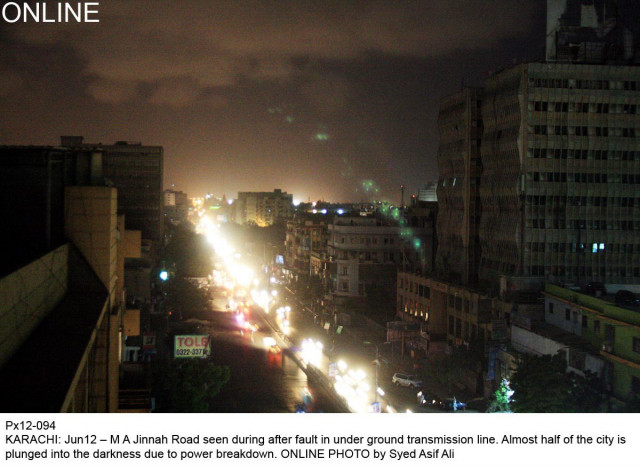Karachi’s electricity supply
Reducing K-Electric’s purchases of power from NTDC will do not improve the situation in other parts of the country

The power crisis in Punjab is caused not by a lack of supply, but rather it is a failure of consumers to pay and a complete disincentive for consumers to not steal electricity. PHOTO: ONLINE/FILE
In Karachi, even though electricity theft and bill evasion occurs at quite high rates, K-Electric has created a system to exempt those areas from load-shedding where there is low theft and high bill collection. This system of incentives for positive behaviour is what has resulted in improvements in Karachi as far as load-shedding is concerned. It is a model to be replicated throughout Pakistan, not maligned as somehow part of the problem for the rest of Pakistan. We oppose the Nawaz Administration’s proposal to reduce K-Electric’s purchases of power from the NTDC, not just because it is a policy born of shortsightedness, but also because it punishes the one city that has managed to get things right. Karachi has Pakistan’s single largest concentration of industry. Its needs justify the purchase of electricity from the national grid, which is paid for by citizens of the city both, in the form of bills and the taxes that pay for the subsidies. Cutting off Karachi’s supplemental power supply would send them a bad message for good behaviour.
Published in The Express Tribune, January 30th, 2015.
Like Opinion & Editorial on Facebook, follow @ETOpEd on Twitter to receive all updates on all our daily pieces.



















COMMENTS
Comments are moderated and generally will be posted if they are on-topic and not abusive.
For more information, please see our Comments FAQ